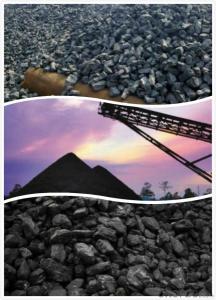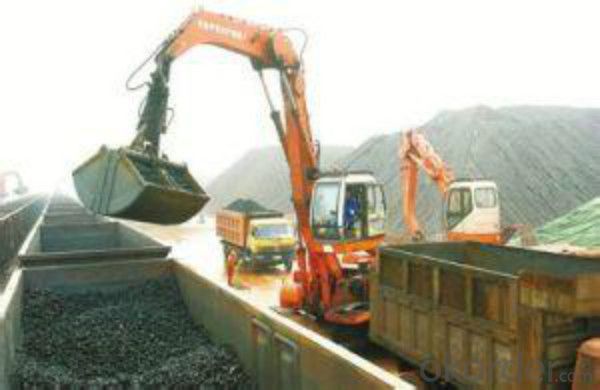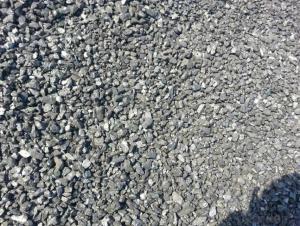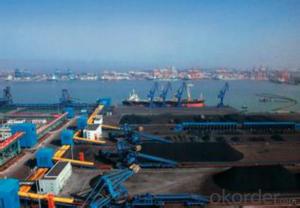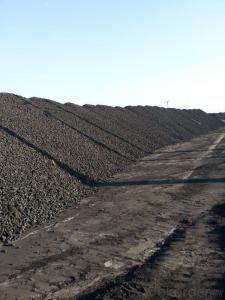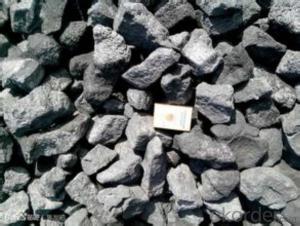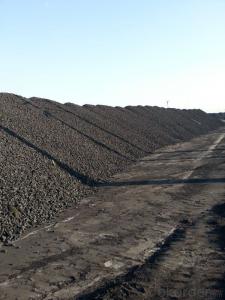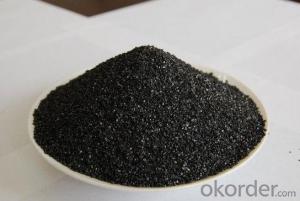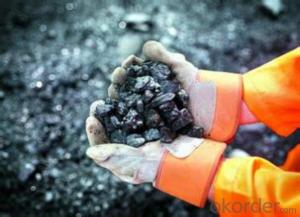Ash 13%Max Met Coke 10- 25mm Made in China
- Loading Port:
- Tianjin
- Payment Terms:
- TT OR LC
- Min Order Qty:
- 900 m.t.
- Supply Capability:
- 15000 m.t./month
OKorder Service Pledge
OKorder Financial Service
You Might Also Like
Product Description
Met Coke(metallurgical coke) is a carbon material resulting from the manufactured purification of multifarious blends of bituminous coal. its medium-grade composite contains a high occurrence of unstable components.
Features
It is widely used in casting and metallurgy Smelting every tons Irons need about 0.4 to 0.6ton coke. As the reducing agent in the steel-making and foundry industry. It is playing more and more important role in the steel industry.
Specification
Item No. | Ash (%) max | S (%) max | F.C. (%) min | V.M (%) max | Moisture (%) max | P (%) max | CSR (%) min | CRI (%) max | Cal.Value (≥Kcal/Kg) |
NF-M001 | 9 | 0.6 | 89.5 | 1.2 | 5 | 0.035 | 65 | 25 | 7250 |
NF-M002 | 10.5 | 0.6 | 88 | 1.2 | 5 | 0.035 | 65 | 25 | 7100 |
NF-M003 | 12 | 0.6 | 86.5 | 1.5 | 5 | 0.035 | 63 | 28 | 6900 |
NF-M004 | 13 | 0.6 | 85.5 | 1.5 | 5 | 0.035 | 60 | 30 | 6800 |
Pictures
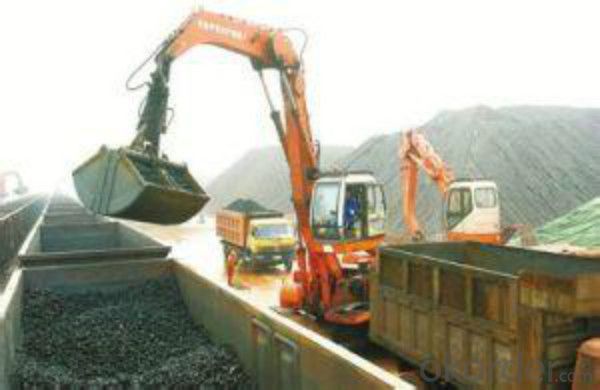
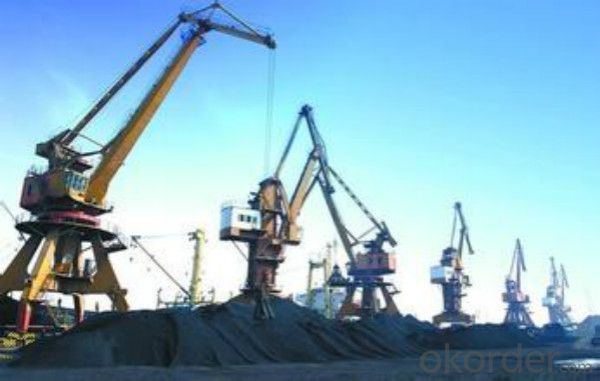
FAQ
1 What is the packing?
Packaging Details: | 1. jumbo ton bag |
Delivery time? Delivery Detail: |
15 days after we get the advanced payment or original L/C |
2 Payment terms?
D/P, L/C,T/T with advanced payment
- Q: What is the greenhouse effect of carbon dioxide?
- The greenhouse effect of carbon dioxide refers to the process by which carbon dioxide and other greenhouse gases trap heat in the Earth's atmosphere, leading to a gradual increase in global temperatures.
- Q: What are the uses of carbon nanotubes?
- Due to their unique properties, carbon nanotubes find wide application across various industries. In the realm of electronics and semiconductors, they are particularly valuable. With exceptional electrical conductivity, carbon nanotubes are ideal for creating smaller and more efficient electronic devices. They can be incorporated as conductive additives in polymers, resulting in materials with enhanced electrical and thermal properties. Another crucial domain where carbon nanotubes excel is materials science. Their exceptional mechanical strength and lightweight nature make them ideal for reinforcing and strengthening materials. By incorporating carbon nanotubes into composites, their mechanical properties can be improved, making them more durable. Furthermore, their usage in constructing super-strong fibers finds relevance in industries such as aerospace and construction. Carbon nanotubes have also found valuable applications in the medical field. They can be utilized in drug delivery systems, wherein drugs are encapsulated within the nanotube structure and directly delivered to specific cells or tissues. This method enables more effective and targeted drug delivery, minimizing the side effects associated with traditional drug administration methods. Additionally, carbon nanotubes are being explored as a potential material for biosensors, facilitating the early detection of diseases and pathogens. In the realm of energy storage, carbon nanotubes are being extensively researched as an alternative to conventional lithium-ion batteries. Their potential to store more energy and charge faster could revolutionize the field of energy storage and power generation. Additionally, carbon nanotubes can be employed as catalysts in fuel cells, enhancing their efficiency and cost-effectiveness. In summary, the applications of carbon nanotubes are vast and continue to expand as new discoveries are made. From electronics to materials science, medicine to energy storage, these nanotubes have the potential to revolutionize various industries and enhance the performance of existing technologies.
- Q: Often see the so-called 30T, 46T, 60T carbon fiber, 60T carbon fiber, equivalent to T hundreds of carbon fibers, is T800, or T1000? I'm not very good at parameter conversion. Is there a parameter list? How do I correspond to the T300T700T800 performance parameter table?
- Three, T300, T700, T800, T1000 intensity were 3530MPa, 4900MPa, 5880MPa, 6370MPa;The intensities of M46 and M60 were 4020MPa and 3820MPa respectively.
- Q: How does carbon contribute to the color of gemstones?
- Carbon contributes to the color of gemstones through its ability to absorb certain wavelengths of light. When carbon is present in gemstones, it can create various color centers that give the gemstone its distinct hue, such as yellow in diamonds or blue in sapphires.
- Q: How does carbon affect the quality of drinking water?
- Carbon can affect the quality of drinking water through two main mechanisms: activated carbon filtration and carbon dioxide (CO2) absorption. Activated carbon filtration is commonly used in water treatment processes to remove organic contaminants, chemicals, and odors, improving the taste and odor of drinking water. On the other hand, excessive dissolved carbon dioxide in water can make it acidic and affect the pH level, potentially making it corrosive and altering the taste. However, carbon itself is not harmful to human health and can be beneficial in certain forms, such as in the form of activated carbon filters.
- Q: What's the difference between blue and red Panasonic batteries (carbon)?
- Blue is leak, proof, general, Purpose, general use battery (leak proof)Red is the long life long life battery (suitable for watches and clocks and other small power appliances)And heavy duty green seems to be good for high power appliances, such as toy cars
- Q: How does carbon impact the availability of freshwater resources?
- Carbon impacts the availability of freshwater resources through various interconnected processes. One of the major ways carbon affects freshwater availability is through climate change. The increased levels of carbon dioxide in the atmosphere, primarily due to human activities such as burning fossil fuels, contribute to global warming. This leads to changes in precipitation patterns, including altered rainfall distribution and intensity. Warmer temperatures caused by carbon emissions can increase evaporation rates and lead to more frequent and severe droughts in certain regions. This reduces the amount of water available for freshwater resources such as rivers, lakes, and reservoirs. Additionally, the changing climate can disrupt natural water cycles, affecting the recharge of groundwater aquifers, which are crucial sources of freshwater. Furthermore, carbon impacts the quality of freshwater resources. Acid rain, a result of increased carbon emissions reacting with atmospheric moisture, can acidify freshwater bodies and make them inhospitable for many aquatic organisms. This disrupts ecosystems and can lead to the loss of species that rely on freshwater resources for their survival. Another way carbon impacts freshwater availability is through its influence on land use. The conversion of forests and wetlands into agricultural or urban areas releases carbon stored in vegetation and soil. This not only contributes to carbon emissions but also reduces the capacity of natural ecosystems to retain and filter water. Forests, for example, play a vital role in maintaining the water cycle by absorbing rainfall and releasing it gradually into streams and groundwater. Deforestation disrupts this process and can lead to decreased water availability downstream. In conclusion, carbon emissions have a significant impact on the availability of freshwater resources. Through climate change, carbon alters precipitation patterns, leading to droughts and reduced water availability. It also affects the quality of freshwater through processes like acid rain. Additionally, land-use changes driven by carbon emissions can further decrease freshwater availability by disrupting natural water cycles.
- Q: How does carbon impact the energy balance of the Earth?
- Carbon impacts the energy balance of the Earth by trapping heat in the atmosphere through the greenhouse effect. This leads to an increase in global temperatures, known as global warming, and disrupts the natural equilibrium of energy flow on the planet.
- Q: What is carbon fiber and how is it used?
- Carbon fiber is a lightweight and strong material composed of thin strands of carbon atoms. It is used in various industries, including aerospace, automotive, and sports equipment manufacturing. It is commonly used to make components that require high strength and low weight, such as aircraft wings, car bodies, bicycle frames, and tennis rackets. Its excellent mechanical properties, including high tensile strength and stiffness, make it an ideal choice for applications where strength and weight reduction are crucial.
- Q: How is carbon used in water filtration systems?
- Carbon is commonly used in water filtration systems due to its impressive adsorption properties. Adsorption involves the molecules of a substance binding to the surface of another material, in this case, carbon. Activated carbon, which is carbon that has been specially processed to create a large surface area, is particularly effective in water filtration. When water passes through the filtration system, the carbon captures and retains a wide range of impurities, including organic compounds, chlorine, volatile organic compounds (VOCs), and certain heavy metals. This adsorption process helps to remove unpleasant odors and tastes from the water, making it more palatable. Carbon also plays a crucial role in removing potentially harmful contaminants such as pesticides, herbicides, and pharmaceutical residues. Additionally, carbon filtration systems can help reduce the risk of waterborne illnesses by removing bacteria, viruses, and parasites. Overall, carbon is an essential component of water filtration systems as it significantly improves the quality and safety of drinking water.
Send your message to us
Ash 13%Max Met Coke 10- 25mm Made in China
- Loading Port:
- Tianjin
- Payment Terms:
- TT OR LC
- Min Order Qty:
- 900 m.t.
- Supply Capability:
- 15000 m.t./month
OKorder Service Pledge
OKorder Financial Service
Similar products
Hot products
Hot Searches
Related keywords

